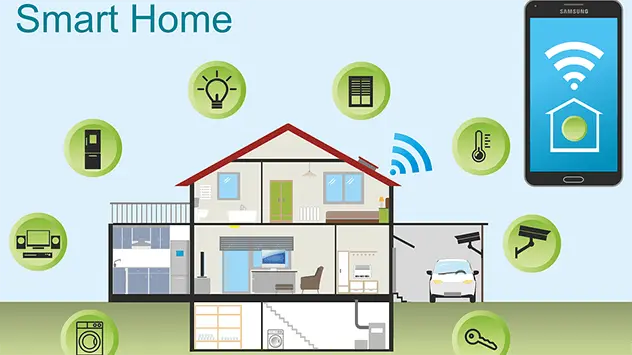In today's digital age, homeowners are increasingly turning to smart home solutions for comfort, convenience, security, and energy efficiency. But here's a little-known secret: the best time to implement home automation is during the construction phase.
Why? Because integrating smart systems early ensures smoother installation, lower costs, and maximum flexibility. If you’re building a home — or helping someone build one — here’s how home automation starts during construction and why it matters.
Why Start Home Automation Early?
Starting automation during construction offers major advantages:
-
No messy rewiring or wall damage later
-
Cleaner installations with hidden conduits and smart switch placements
-
Custom planning for lighting, security, and smart features
-
Cost savings on retrofitting and modifications
-
Future-ready infrastructure with better resale value
When smart tech is considered from Day 1, it becomes part of the home’s DNA — not just an add-on.
Step-by-Step: How to Integrate Home Automation During Construction
1. Plan Ahead with Experts
Before breaking ground, work with:
-
Architect
-
Electrical Engineer
-
Smart Home Integrator
They'll help design the house to accommodate automation features. This includes planning for:
-
Smart lighting
-
Voice assistants
-
Home theater systems
-
Internet and Wi-Fi coverage
-
Surveillance cameras
Early planning = long-term comfort.
2. Define Your Smart Home Needs
Not every home needs every gadget. Decide what matters to you:
-
Lighting Control – mood lighting, automatic dimming
-
Smart Locks & Sensors – enhanced security and alerts
-
Smart Thermostats/ACs – energy savings and comfort
-
CCTV and Video Doorbells – remote surveillance
-
Multi-room Audio Systems – music in every room
-
Voice-activated Assistants – convenience at your command
3. Design Structured Cabling Systems
This is the most important technical step. During electrical wiring:
-
Use CAT6 or CAT7 Ethernet cables for fast internet and device communication
-
Lay conduits for smart sensors, cameras, and alarm systems
-
Allocate power points in advance for devices like routers, hubs, smart switches, etc.
-
Consider backup systems (UPS or inverter connections) for critical smart devices
This infrastructure ensures your smart home doesn’t lag in performance later.
4. Choose Your Ecosystem
Pick a smart home system that supports your lifestyle and budget:
-
Google Home
-
Amazon Alexa
-
Apple HomeKit
-
Advanced systems like Lutron, Control4, or Crestron
Ensure that all your chosen devices are compatible with this ecosystem. It avoids integration problems in the future.
5. Install Smart Devices During Fit-Out
Once the walls, flooring, and false ceilings are in place:
-
Fit smart switches, motion sensors, and touch panels
-
Install video door phones, CCTV, and access control systems
-
Set up central controllers, routers, and automated curtain motors if needed
At this stage, all your smart devices get physically installed.
6. Configure and Calibrate
After device installation:
-
Set up the software and apps on your phone or tablet
-
Configure automation scenes (e.g., “Movie Night”, “Away Mode”, etc.)
-
Test all components for performance and sync
-
Provide training to the homeowner
BONUS: Must-Have Automation Features for New Homes
-
Smart Main Door Lock – Keyless and secure
-
Motion-Based Lighting – Saves energy in corridors and bathrooms
-
Mobile-Controlled Lights & Fans – Control anytime, anywhere
-
CCTV with Cloud Storage – Stay safe and monitor remotely
-
Automated Curtains – Convenience and style
-
Smart AC/Heater Control – Efficient power usage
Future-Proof Your Home
Even if you're not ready for full automation now, lay the basic groundwork:
-
Empty conduits for future wiring
-
Structured cabling pathways
-
Sufficient electrical provisions for future devices
This saves huge costs and effort if you decide to upgrade in a few years.
Home automation is not a luxury anymore — it’s becoming a standard in modern homes. Starting the process during construction gives you more control, better aesthetics, and smarter living.
So, if you’re building your dream home — think beyond bricks and paint. Think smart. Think future.
https://www.livehomes.in/blogs













